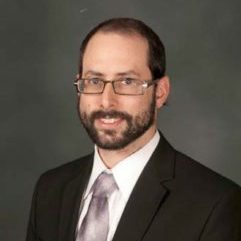The only amendment to Shemona Esrei on the 17th of Tammuz is during Mincha. The reason given is because the Tefila of Aneinu was composed by Ellijah the prophet during the time of the Mincha. The scripture tells us that Eliyahu was only answered at Mincha.
The commentaries explain that unlike Shacharis and Maariv, Mincha necessarily comes in the middle of our daily routine. The uniqueness of Mincha is the distraction and turmoil that often accompanies it. Shacharis is said before we begin our day and Maariv can be said when we are finished with our day. Davening Mincha is like opening a window for G-d to peek into our lives.
The seventeenth of Tammuz is the anniversary of the smashing of the Luchos and the burning of the Torah by Apostumous. There is obviously a connection between the two. Also on this day, at various times in our history, the walls of Jerusalem were breached, the daily sacrifice was discontinued and an idol was erected in the holy of holies.
Aside from the common denominator that we will discuss, it is important to remember Hashem’s promise to spread the punishment for the golden calf over many years. Any tragedy is connected to the golden calf.
The Medrash tells us that when Moshe came down from Mount Sinai the tablets suddenly became heavy. The holy letters, written by G-d, could not bear to enter the presence of idol worshippers. In Moshe’s greatest and most dramatic lesson to the Jewish people, he showed that holiness couldn’t exist in a place where it is unwelcome.
The Torah ends with the death of Moshe and an epitaph to his life. The very last three words of the Torah, L’eienei Kol Yisroel, reference Moshe’s bold and dramatic demonstration that Torah cannot coexist with idol worship.
Eliyahu didn’t tell the people to serve Hashem. He told the people to make up their minds: If you are for Hashem – stay with Hashem; but if you are for the Baal – stay with the Baal.
The lesson of Moshe, Eliyahu, and Mincha are all the same: Even in the most hectic times of our day and on the craziest days of our lives, we need to be sure that Hashem is welcome.
Rabbi Hirsch points out that the destruction of the Beis Hamikdosh was no surprise. The only surprise was that Hashem stopped protecting and dwelling in the Beis Hamikdosh. The burning of the Torah, the breaking of the Luchos, the desecration of the Holy of Holies, the discontinuation of the Tamid and the breaching of the wall were all a result of our actions that mage the Shechina unwelcome in our midst.
May we merit to make Hashem feel welcome in our homes, our lives and our lands. May this Tisha B’av be a day of holiness and joy in the cities of Yehuda and the courtyards of Yerushalayim.

As usual, beaufiful and inspiring insights. Reminds me of discussion I’ve heard about HaShem’s commandment that the people should build a Mishkan ‘among them.” That refers to the physical misikan plus the spiritual “place’ within us where HaShem’s presence is welcome. You have shown us the flip side: what happened when His presence was no longer welcome, as it were. This is a powerful message for what we have to do to merit the Third Temple. Thanks!